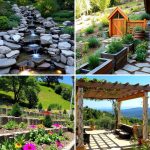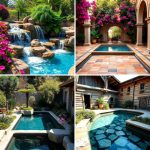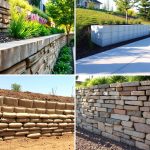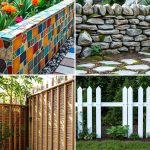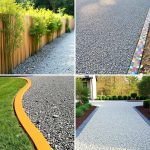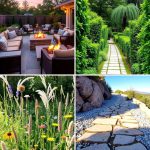A hillside can be transformed into a vibrant oasis that combines artistry with nature’s raw beauty. When slopes become canvases for design, every gradient invites creativity and function. With thoughtful selection of plants, practical structures, and a commitment to sustainability, these landscapes offer a unique blend of appeal and practicality. The interplay of natural light, water features, and organic materials creates spaces that exude comfort and charm. Each idea is designed for those who value both aesthetics and environmental care. Let your imagination venture into these creative openings and explore 22 hillside landscaping ideas.

1. Terraced Garden Design
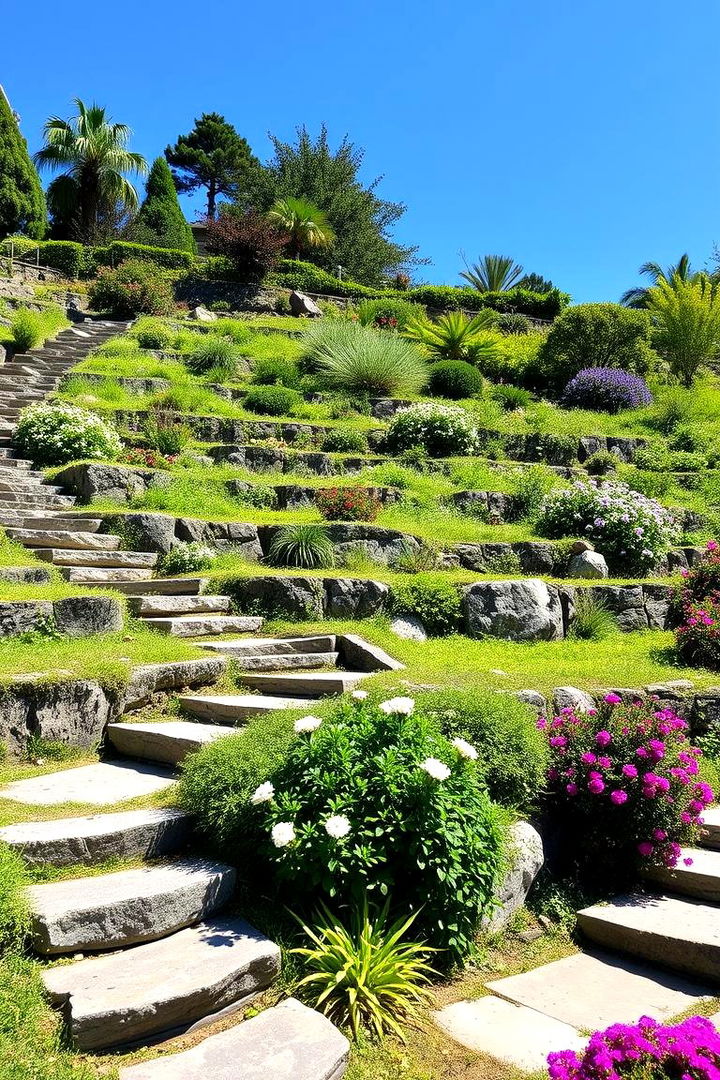
A gentle slope unfolds into a series of charming, stepped terraces that invite both beauty and function. This design takes advantage of natural land contours, allowing for varied planting beds and accessible seating areas. The terraced structure minimizes soil erosion while providing a multi-dimensional view of the hillside. Practical drainage improvements and clearly defined levels promote ease of maintenance and visual interest. Gardeners enjoy the opportunity to experiment with seasonal blooms and groundcovers, ensuring that each level bursts with color as the seasons change, making it a rewarding landscape project for nature enthusiasts.
2. Native Plant Integration
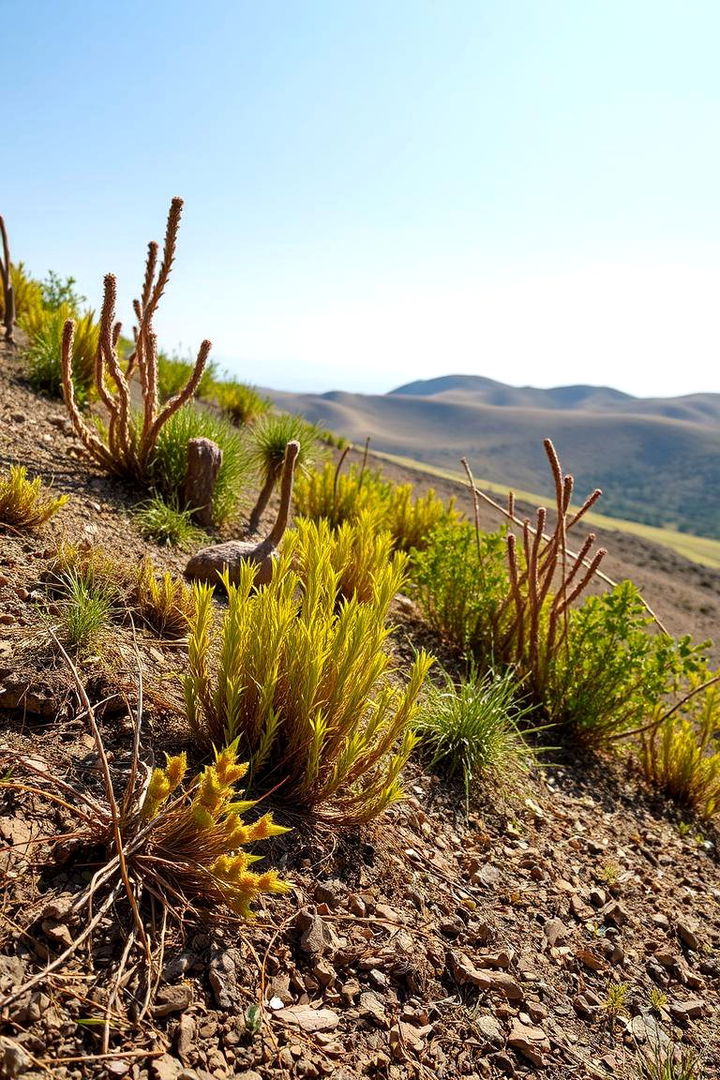
A serene hillside becomes a living tapestry when native plants are integrated thoughtfully. This idea emphasizes using local flora that naturally adapts to the hillside climate, reducing water usage and promoting biodiversity. Homeowners find that native species create a sustainable, low-maintenance landscape that naturally supports local wildlife. The carefully chosen species offer vibrant seasonal changes and natural textures, intermingling with the terrain in a way that protects soil integrity. Practical and inspiring, this approach not only beautifies the outdoor space but also fosters a sense of place and environmental stewardship in every corner.
3. Eco-friendly Slope Stabilization

A refreshing approach to hillside landscaping focuses on eco-friendly slope stabilization, ensuring both safety and beauty. This method employs vegetation and natural materials like logs and rocks to secure loose soil while adding rustic charm. Homeowners benefit from reduced erosion and improved water absorption, making for a more sustainable outdoor environment. The design incorporates native groundcovers and strategic planting that works harmoniously with the natural topography, reducing maintenance needs. This practical solution creates a picturesque setting while protecting the hillside’s integrity, promoting a greener and safer landscape.
4. Rock Garden Accents
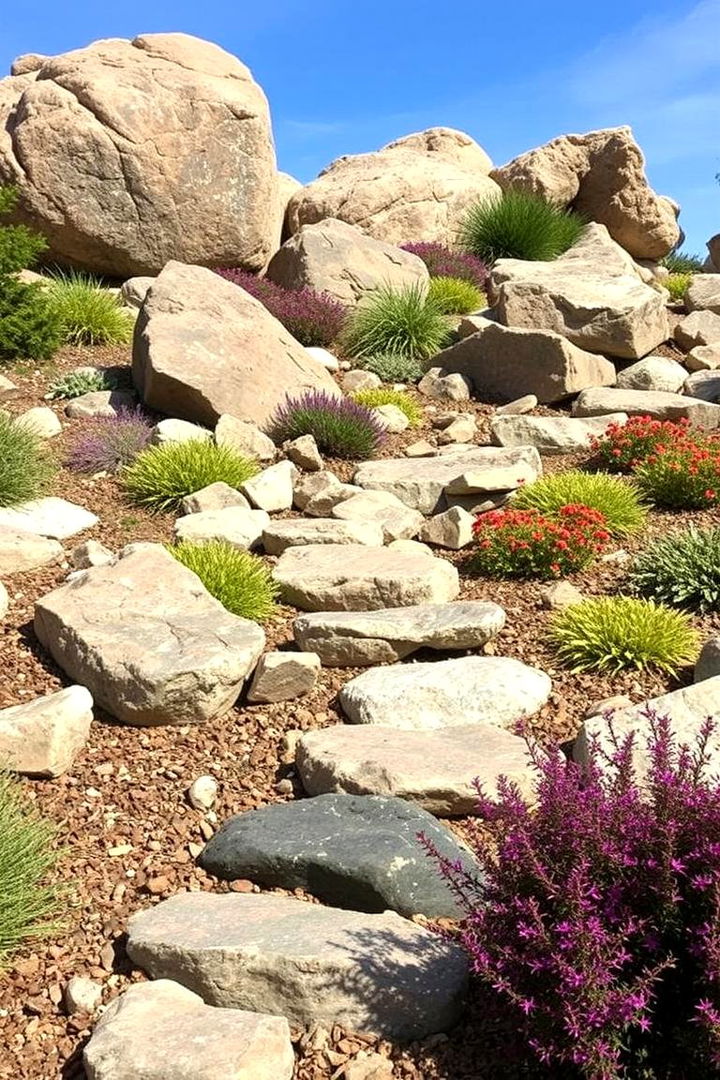
A bold play on textures, a hillside rock garden accent balances ruggedness with elegance. This idea merges carefully placed boulders with a scattering of ornamental stones, creating captivating focal points that complement the natural slope. The hardscape elements highlight the greens of surrounding plants and delicate flowers, offering a striking contrast that heightens visual appeal. Gardeners can enjoy the low-maintenance benefits and drought resistance often associated with rock gardens, while also creating a unique al fresco art installation that resonates with nature’s raw beauty and strength.
5. Water Feature Inspiration
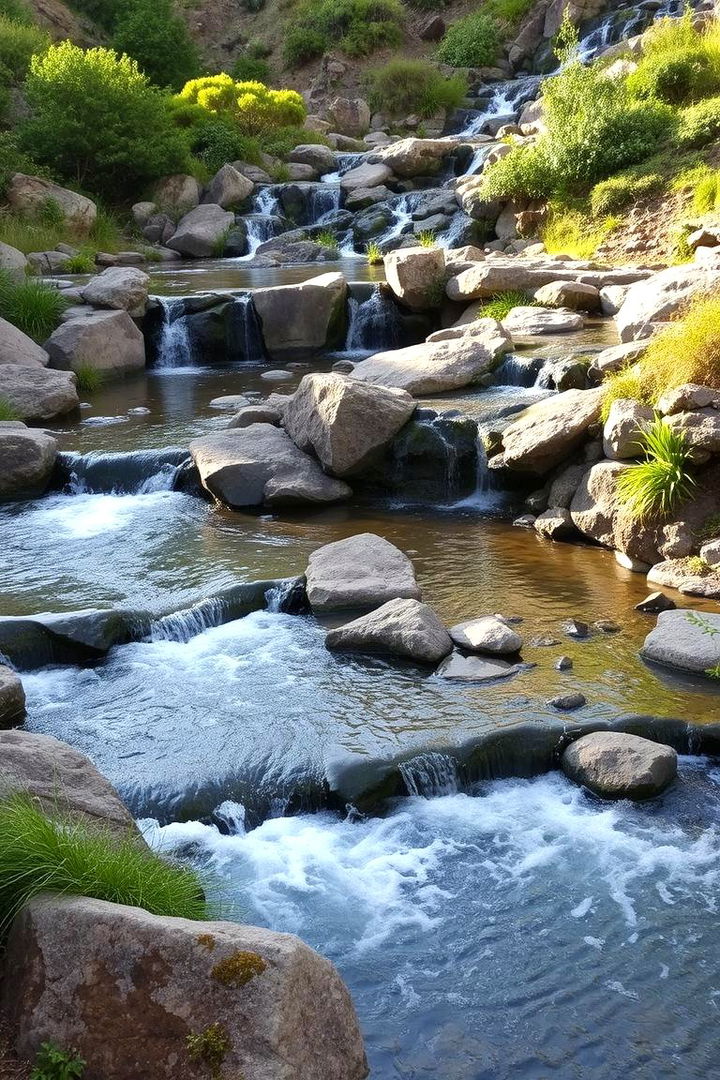
A bubbling water feature on a hillside draws the eye and soothes the spirit with the gentle sound of flowing water. This concept integrates cascading streams, small waterfalls, or ponds into the landscape, offering a natural cooling effect and creating micro-habitats. The interplay of water with surrounding rocks and lush vegetation enhances the sensory experience and attracts local wildlife. Practical design considerations ensure proper drainage and integration with the slope, while well-planned illumination adds a magical quality to evenings. This aesthetic and functional feature provides both relaxation and environmental benefits to any hillside retreat.
6. Edible Landscaping on Hillsides
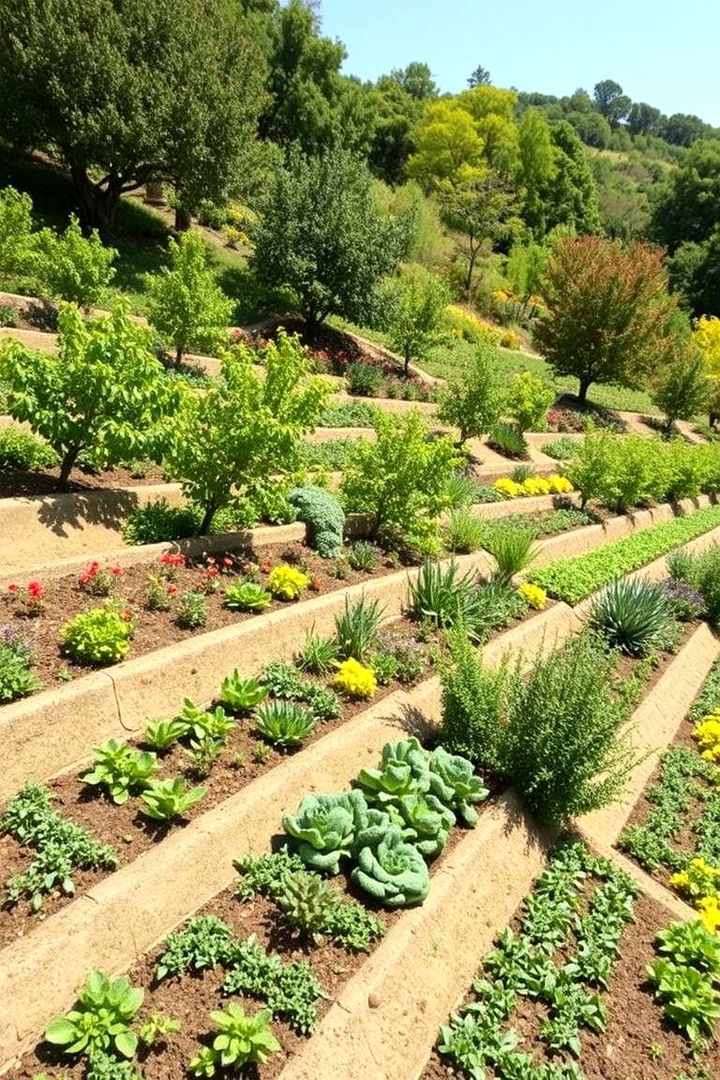
A hillside transformed into an edible landscape offers both beauty and bounty by merging aesthetic design with functional gardening. This idea involves planting fruit trees, herbs, and vegetables along the slope in carefully defined beds. Homeowners enjoy fresh produce while creating a sustainable ecosystem that encourages local pollinators. Thoughtful layering and natural terraces optimize sunlight exposure and drainage, reducing maintenance and enhancing yield. The varied textures and colors of the edible plants add visual interest while providing a healthy, practical option for self-sufficiency and community sharing on any hillside setting.
7. Steep-Slope Irrigation Techniques
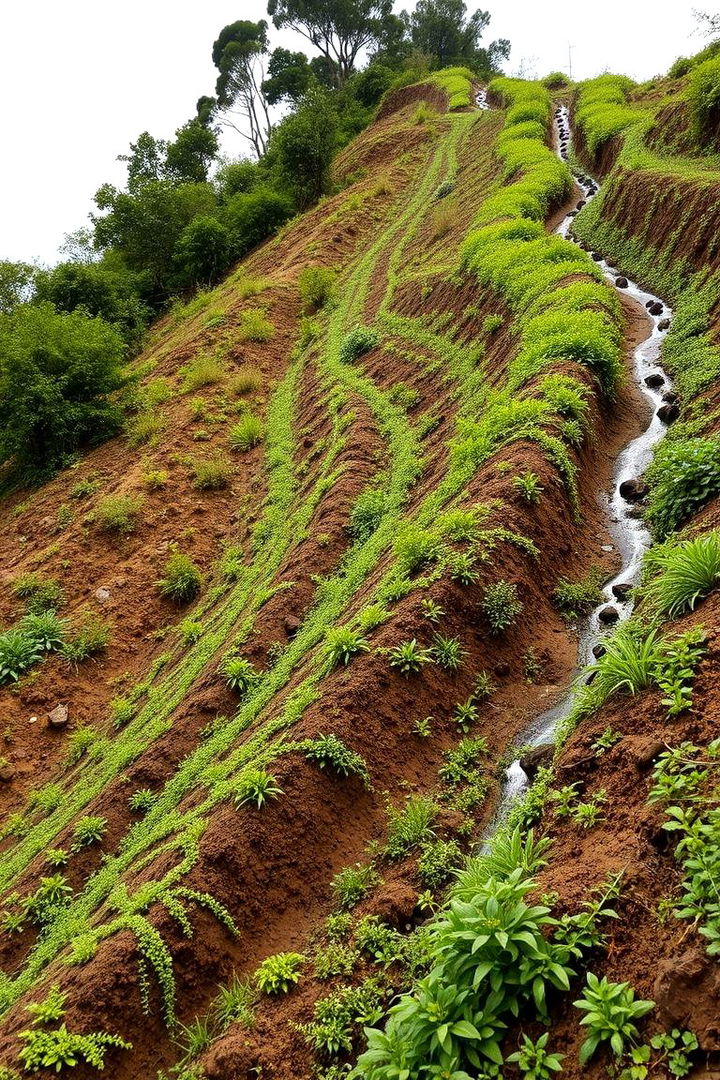
A clever design for steep slopes incorporates specialized irrigation techniques that ensure every planted area thrives. This idea embraces drip systems and contour-based watering methods to navigate the incline efficiently. The system minimizes water waste by targeting roots directly, while elevating the overall garden’s health and sustainability. Gardeners benefit from improved plant growth, reduced labor on maintenance, and lower water bills. This method combines cutting-edge technology with natural landscape contours, turning challenging terrain into a manageable, thriving garden that uses resources wisely and maximizes natural beauty.
8. Sustainable Soil Improvement
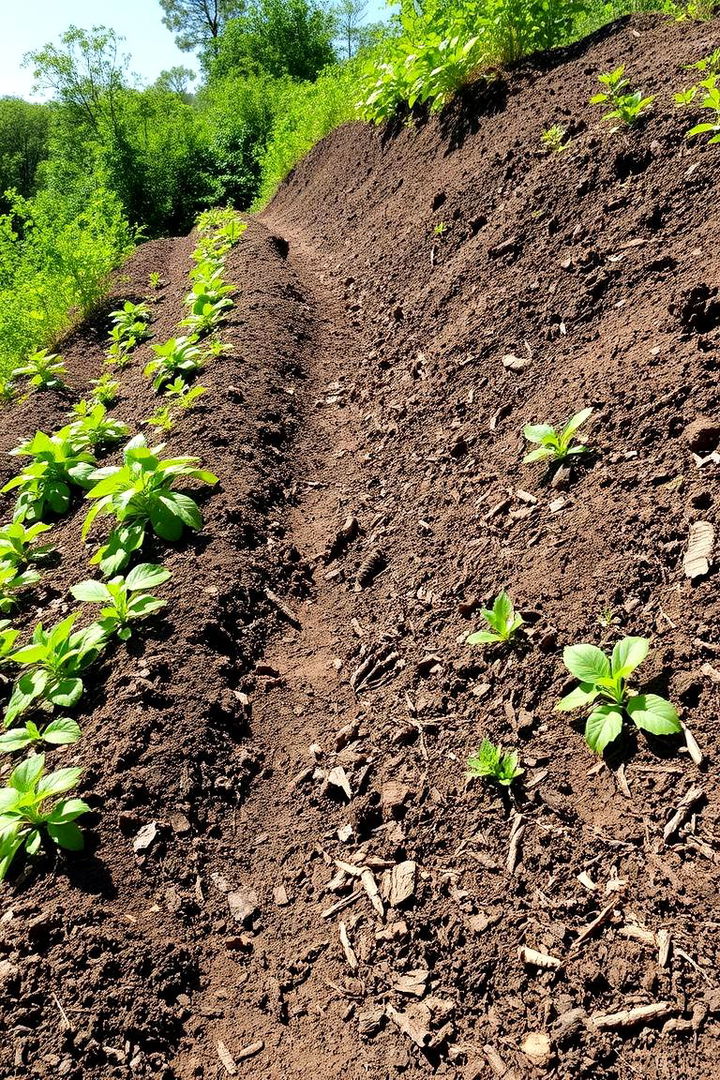
A healthy hillside garden begins with sustainable soil improvement practices that boost fertility and structure. This idea involves organic composting, mulching, and the use of cover crops to build rich, resilient soil layers. By enhancing soil health, homeowners enjoy enhanced water retention and reduced erosion, simultaneously nurturing plant growth and supporting microbial life. The process is both environmentally friendly and cost-effective, ensuring that the hillside landscape thrives naturally. As soil improvement transforms the foundation of the garden, it offers an accessible, practical step towards creating a lively and sustainable outdoor haven on steep slopes.
9. Wildflower Meadows Incorporation
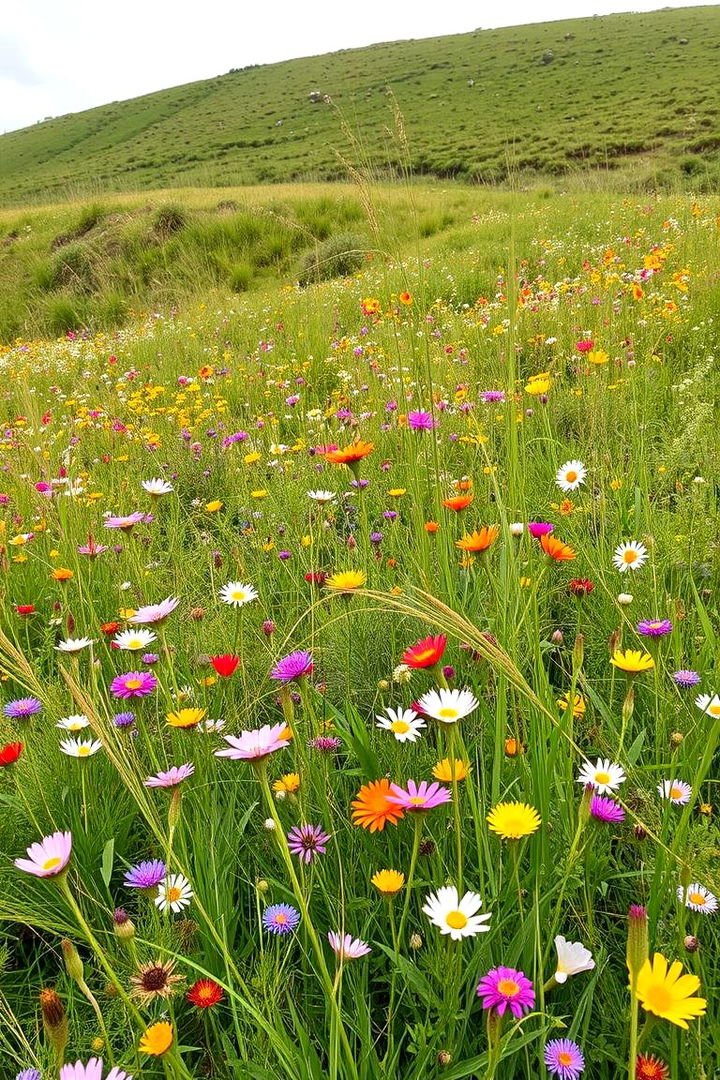
A hillside comes alive when dotted with vibrant wildflower meadows that invite the eye and enliven the spirit. Integrating wildflowers encourages the growth of local species that thrive in natural conditions with minimal upkeep. Homeowners delight in seasonal changes as bursts of color evolve with the weather, creating a living, breathing landscape. This method promotes pollinator activity and overall biodiversity, contributing to a healthier environment. The relaxed, natural aesthetic of a wildflower meadow on a slope offers a low-maintenance yet stunning display, making the landscape enchanting and inviting year-round.
10. Minimalist Landscape Aesthetics
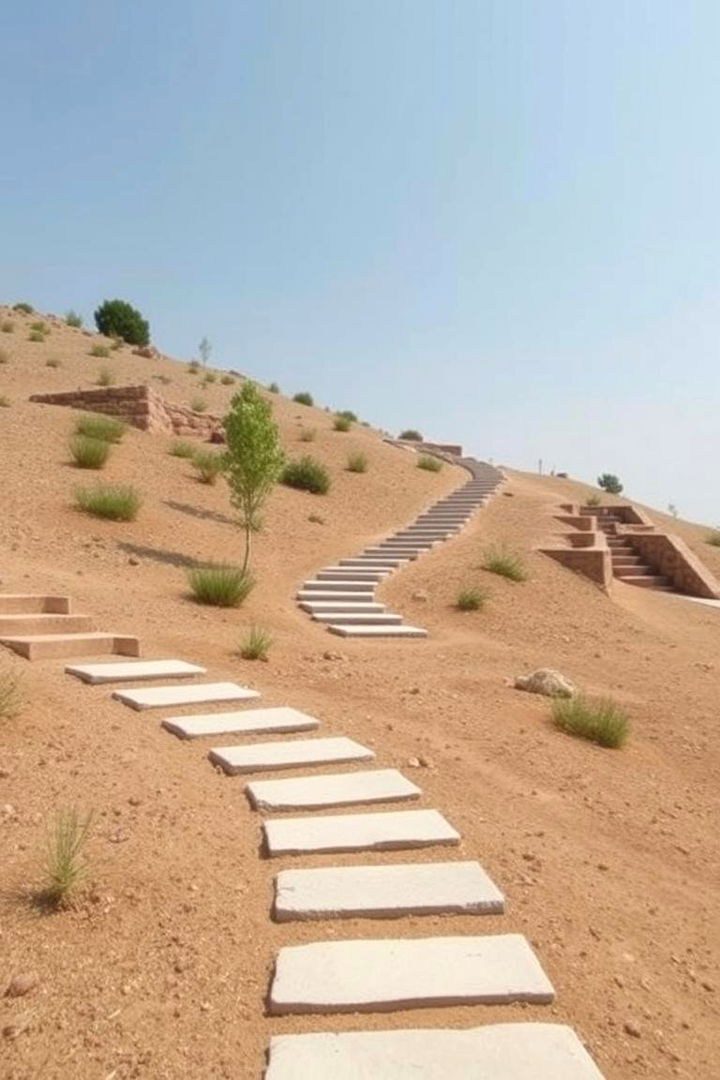
A tranquil hillside transforms with a minimalist landscape aesthetic that emphasizes simplicity and open space. In this design, clean lines and uncluttered areas allow natural beauty to shine. Homeowners favor the reduced maintenance and stress-free environment created by intentional planting and subtle color palettes. The minimalist approach cultivates a sense of calm and order, drawing attention to key features like elegant stone pathways or a single striking sculpture. This style is both modern and practical, reducing labor and water consumption while still providing a refined and visually appealing outdoor retreat on a hillside.
11. Outdoor Lighting for Hillsides
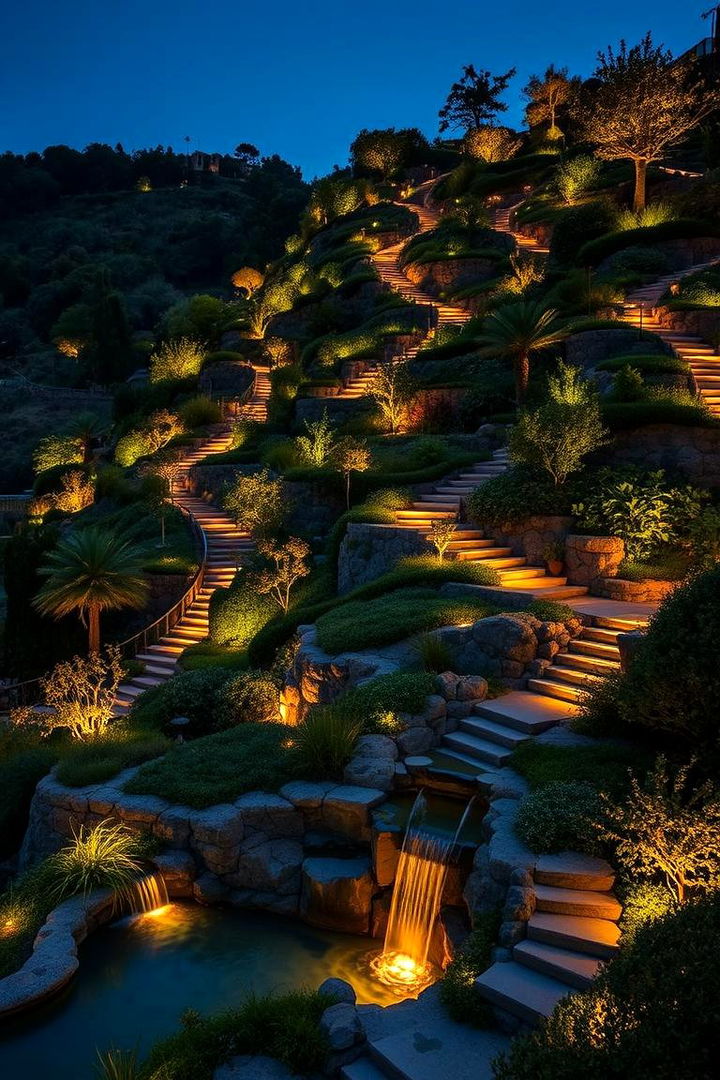
A captivating hillside nightscape emerges when strategic outdoor lighting is added to illuminate natural features and pathways. Thoughtful placement of solar and LED lights along trails, terraces, and water features enhances safety and highlights architectural details after dark. Homeowners benefit from extended usability of their outdoor space, creating magical environments for evening gatherings and serene solitude. The lighting design focuses on energy efficiency and minimal environmental impact while elevating the hillside’s overall ambiance. This idea offers practical yet dramatic improvements, ensuring that the beauty of the landscape shines brightly even as the sun sets.
12. Artful Sculptural Focal Points
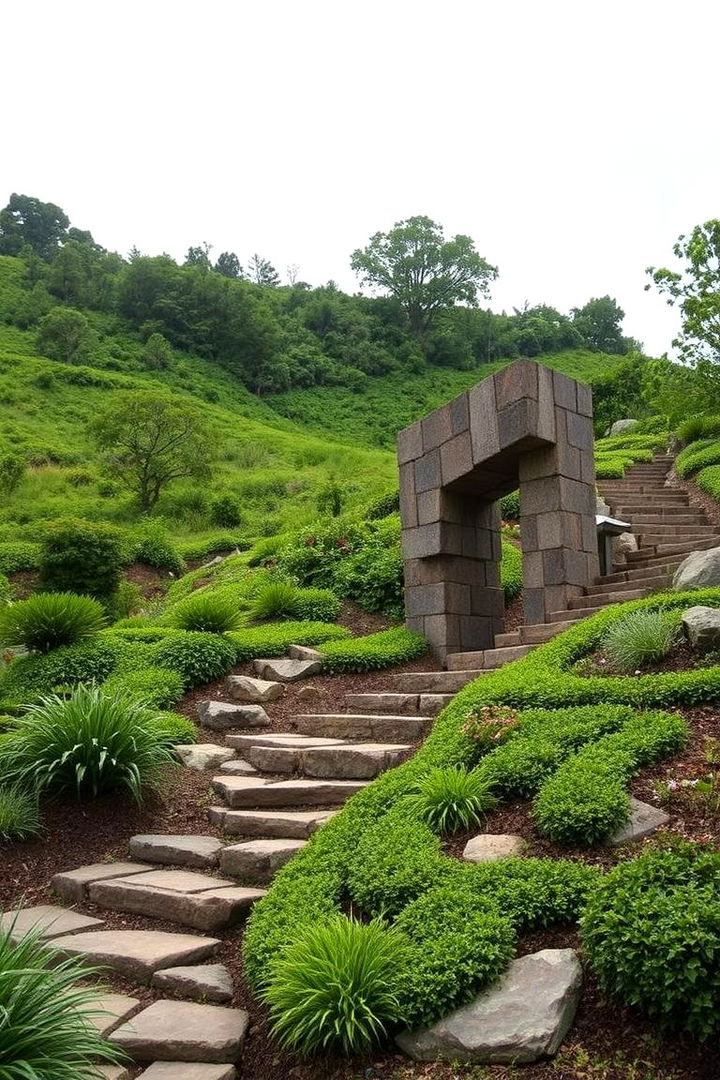
A hillside garden gains personality with the introduction of artful sculptural focal points that act as eye-catching landmarks. Whether it’s a modern metal installation or a classic stone carving, these pieces create dramatic shifts in visual rhythm and offer conversation starters. Homeowners appreciate how such sculptures can harmonize with natural surroundings while adding a unique touch of creativity. These elements also serve to break up large expanses of greenery, adding layers of interest and dynamic energy to the outdoor environment. This blend of art and nature elevates the entire landscape into an inspirational outdoor gallery.
13. Natural Pathway Curves
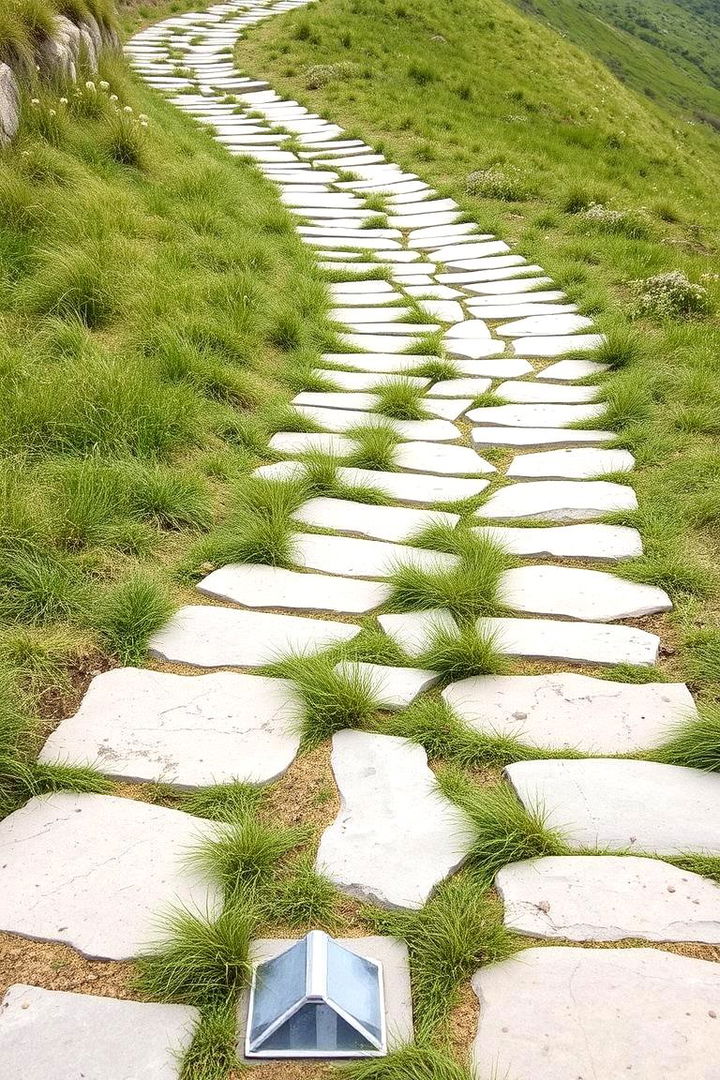
A winding, natural pathway curving gracefully along a hillside invites exploration and a sense of discovery. This approach emphasizes organic design, using gracefully shaped stone or gravel paths that meander through varied garden zones. The curvilinear layout not only enhances aesthetic appeal but also ensures safe navigation of uneven terrain. Gardeners benefit by creating intuitive access points to different features without altering the natural contours excessively. With subtle integration of native groundcovers alongside the path, this design element provides both a practical route and a scenic journey that naturally complements the hillside’s overall allure.
14. Multi-Level Seating Areas
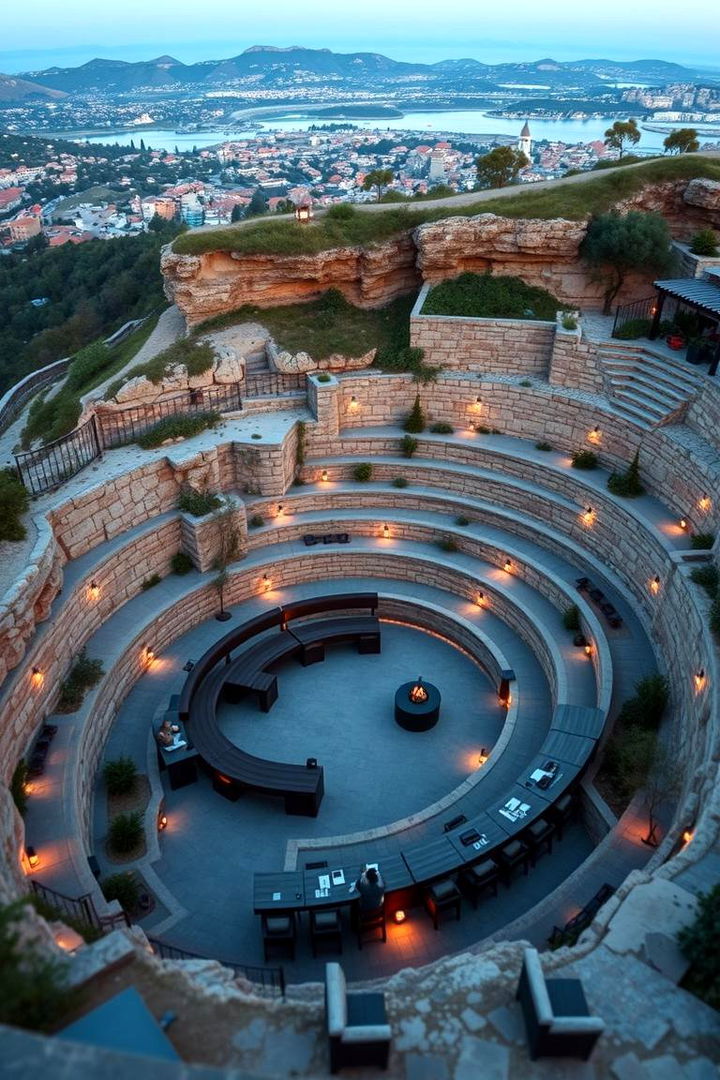
A hillside retreat flourishes with thoughtfully designed multi-level seating areas that encourage relaxation and social interaction. These elevated platforms or built-in benches take advantage of natural slopes to create cozy nooks with panoramic views. Homeowners can enjoy intimate gatherings, reading under the open sky, or quiet reflection amid the greenery. The design carefully considers stability and privacy, often enhanced by surrounding plantings and subtle lighting. Practical and inviting, these seating arrangements provide an accessible way to enjoy nature’s beauty while adding structure and functionality to an otherwise challenging hillside environment.
15. Wildlife-Friendly Landscaping

A hillside landscape becomes a sanctuary for local fauna when designed with wildlife-friendly principles in mind. This idea advocates for choosing plant species that offer food and shelter for birds, butterflies, and small mammals. Homeowners appreciate the natural balance achieved by encouraging beneficial insects and preserving local ecosystems. The design also considers safe passageways and protective zones that minimize human impact while maximizing nature’s charm. With careful planning, this approach creates an environment where both wildlife thrives and visitors enjoy a dynamic, living landscape that celebrates the harmonious coexistence of human design and natural habitats.
16. Drought-Resistant Plant Selections
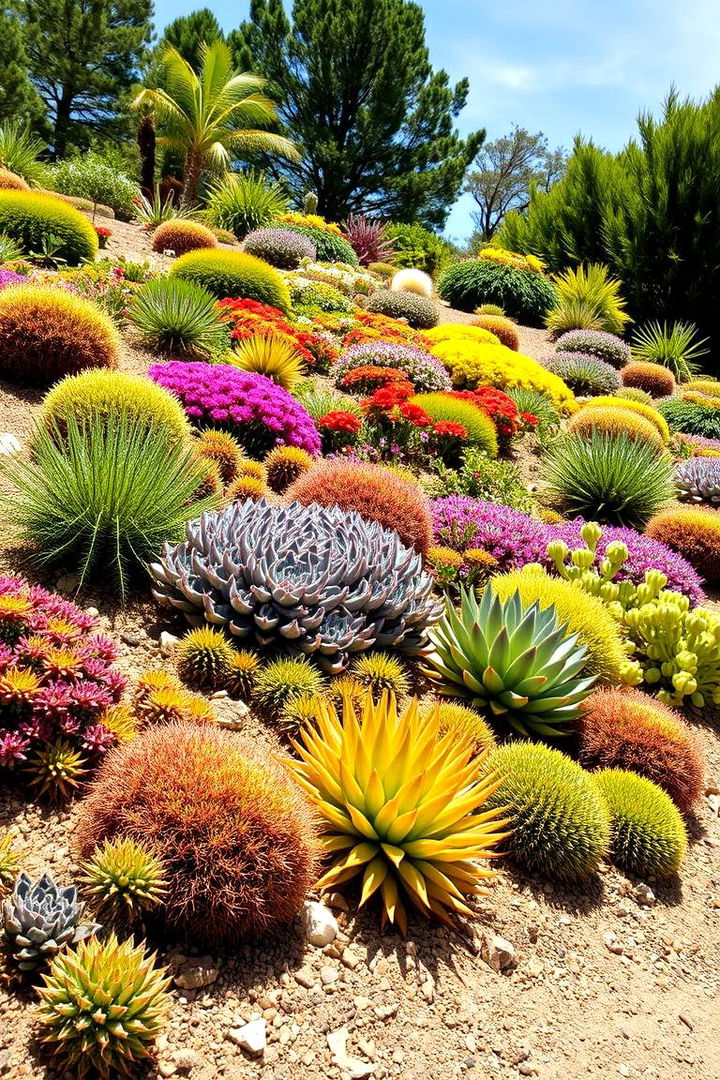
A resilient hillside thrives with drought-resistant plant selections that require minimal irrigation while offering impressive aesthetics. This eco-conscious approach prioritizes species known for their low water needs, ensuring a sustainable and hardy landscape. Homeowners benefit from reduced water bills and maintenance efforts while still enjoying a lush array of textures and colors. The carefully curated plants cope well with both sun and wind, proving ideal for challenging slopes. This method not only secures long-term garden health but also supports environmental sustainability, making it a practical and visually appealing option for hillside landscapes under water restrictions.
17. Eco-Terrain Stone Paving
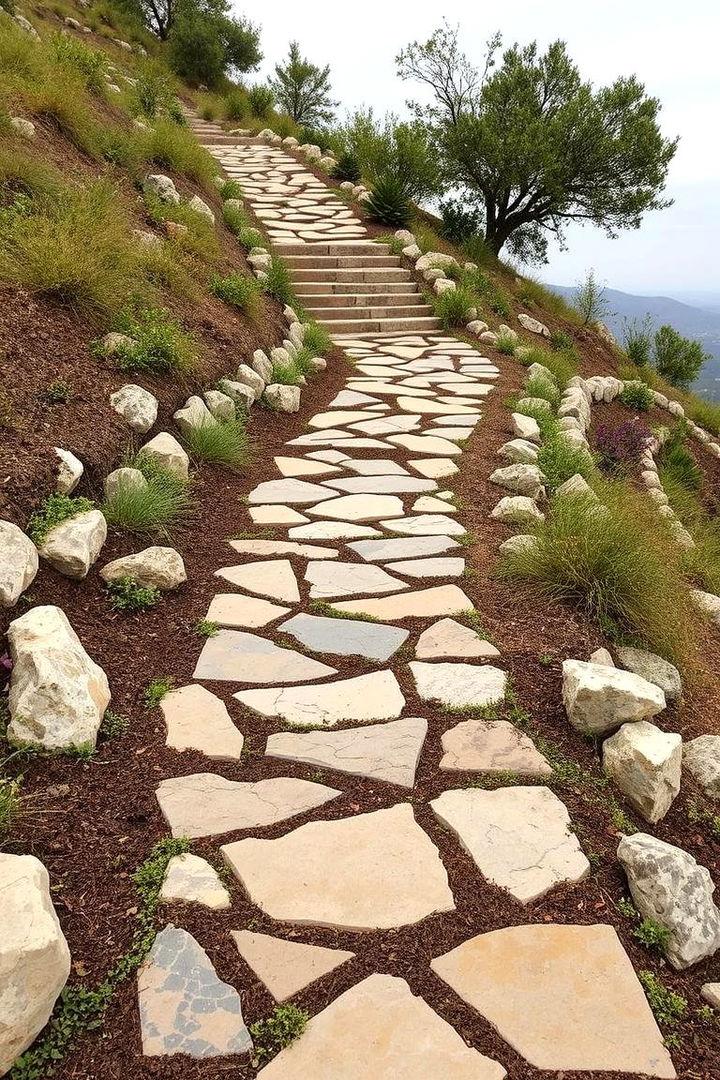
A naturally elegant pathway emerges when eco-terrain stone paving is incorporated into hillside landscaping designs. This method uses reclaimed or locally sourced stones arranged in creative patterns that complement the outdoor surroundings. The durable and weather-resistant paving offers practical benefits such as improved drainage and reduced soil disruption. Homeowners appreciate the timeless charm and rustic appeal alongside ease of maintenance. The established layout guides visitors through the garden while emphasizing natural textures and color contrasts, making the hillside not only accessible but also a visually compelling destination that marries function with eco-sustainability.
18. Native Shrub Borders
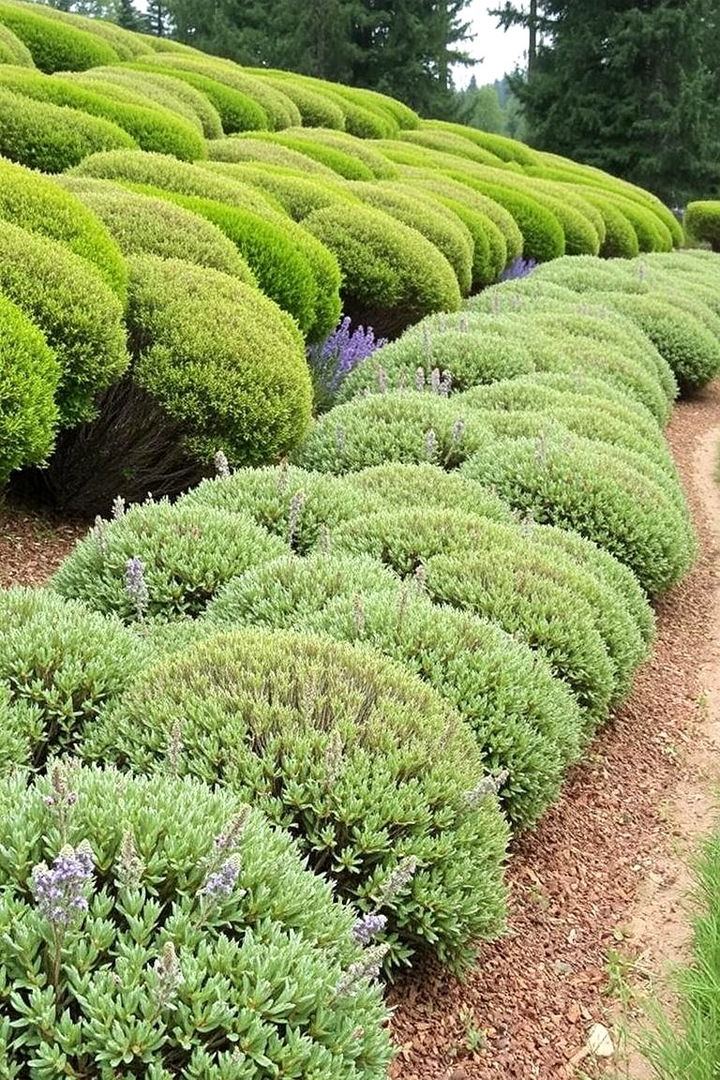
A hillside designed with native shrub borders creates defined spaces while reinforcing the local ecosystem. These carefully selected shrubs thrive naturally in the region, requiring minimal care and providing essential coverage. Homeowners enjoy the dual benefits of effective erosion control and a visually attractive boundary that frames garden beds and walkways. The shrubs offer seasonal interest with varied textures and subtle blooms, inviting local birds and beneficial insects. This border technique enhances landscape structure and unity while promoting sustainable gardening practices that are both practical and inherently connected to the natural environment.
19. Organic Mulching Techniques
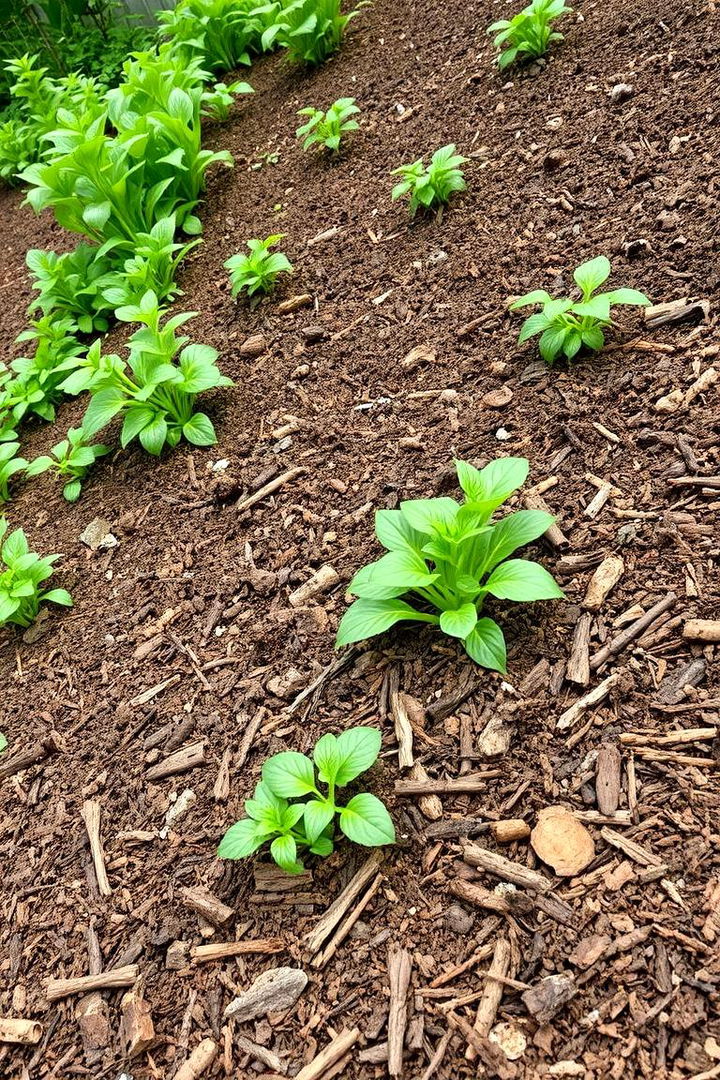
A hillside garden benefits tremendously from organic mulching techniques that improve soil health and moisture retention. Rich layers of composted bark or leaf litter are spread to create a natural ground cover that suppresses weeds and stabilizes temperatures. Homeowners experience enhanced fertilizer value and reduced water usage, making maintenance easier and more eco-friendly. The organic mulch also enriches the soil with natural nutrients, fostering robust plant growth over time. The result is a sustainable and resilient landscape where natural textures and earthy tones create a comfortable, low-maintenance environment on challenging slopes.
20. Urban Hillside Design
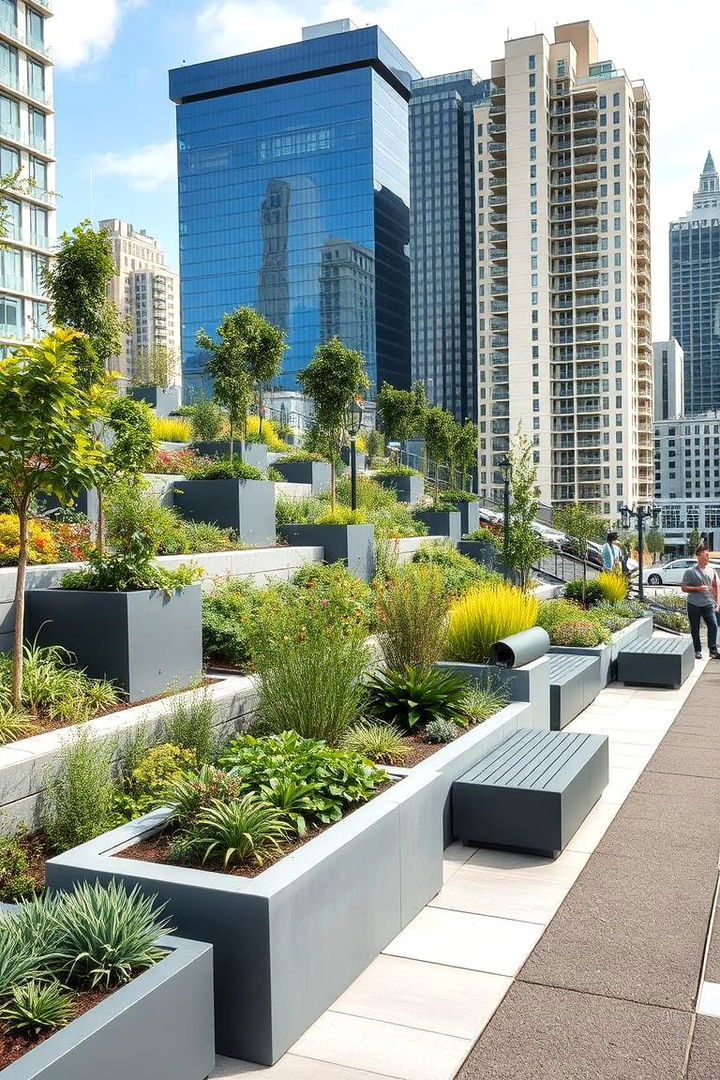
A modern take on hillside landscaping is urban hillside design, which integrates sleek elements into a compact space. This idea utilizes contemporary materials, geometric planters, and innovative seating to create a stylish outdoor retreat in urban settings. Homeowners benefit from purposeful design where both functionality and aesthetics are prioritized, making even limited areas feel expansive. The integration of greenery with urban backdrops brings a refreshing natural balance to city living. With a focus on sustainability and modern trends, urban hillside design delivers creative solutions that combine convenience, practicality, and a bold visual statement.
21. Innovative Slope Erosion Control
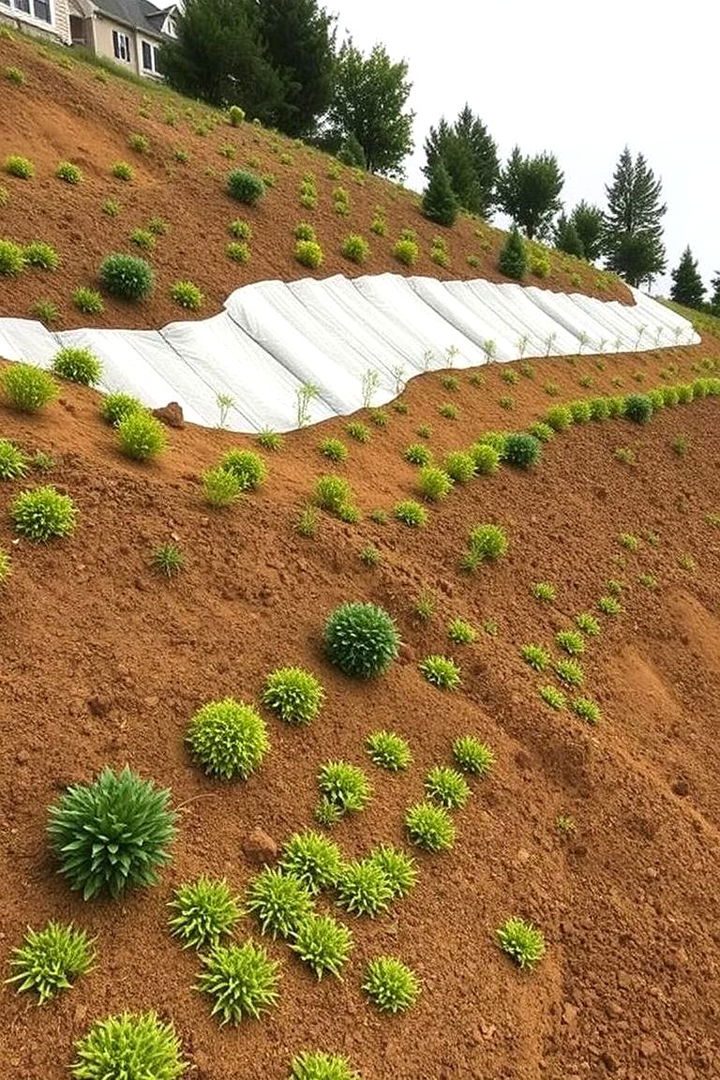
A smart hillside solution incorporates innovative slope erosion control methods that are as practical as they are beautiful. Combining geotextiles, native vegetation, and contour planting, this approach secures soil stability while curating an attractive garden environment. Homeowners benefit from reduced maintenance costs and enhanced safety, as strategic design minimizes the risk of landslides and water runoff. The integration of these engineering techniques with natural elements creates a harmonious blend that protects the hillside without sacrificing visual appeal. This solution demonstrates how modern methods can work seamlessly with nature to support a thriving, secure landscape.
22. Eco-Design with Rain Gardens

A hillside landscape reaches new heights when eco-design is paired with the elegance of rain gardens. This idea involves strategically placed depressions that collect runoff, allowing rainwater to nurture specialized plantings and promote natural filtration. Homeowners appreciate the dual function of beautification and water management, reducing erosion and boosting biodiversity. The rain garden naturally supports native flora that thrive in periodic wet conditions, contributing to a sustainable and resilient environment. Practical and visually striking, this design seamlessly integrates modern sustainability concepts with the organic charm of a hillside garden.
Let nature and creativity remind you that innovative hillside landscaping can be both practical and inspiring. The blend of sustainable techniques, artistic touches, and natural elements forms a cohesive outdoor haven, encouraging homeowners to experiment and enjoy their space. Embrace the journey and bring these 22 hillside landscaping ideas to life with energy and vision.
Conclusion:
A hillside transformed through thoughtful design reveals not only beauty but a commitment to sustainability and wellness. Each idea—from terraced gardens to eco-friendly rain gardens—offers functional benefits and aesthetic charm. The creative integration of native plants, innovative irrigation, and artistic elements demonstrates that every slope has the potential to become an inviting sanctuary. These concepts encourage a practical yet inspired approach to outdoor living while nurturing the environment. Let this collection of 22 hillside landscaping ideas spark your creativity and serve as a blueprint for designing an extraordinary, sustainable haven.

